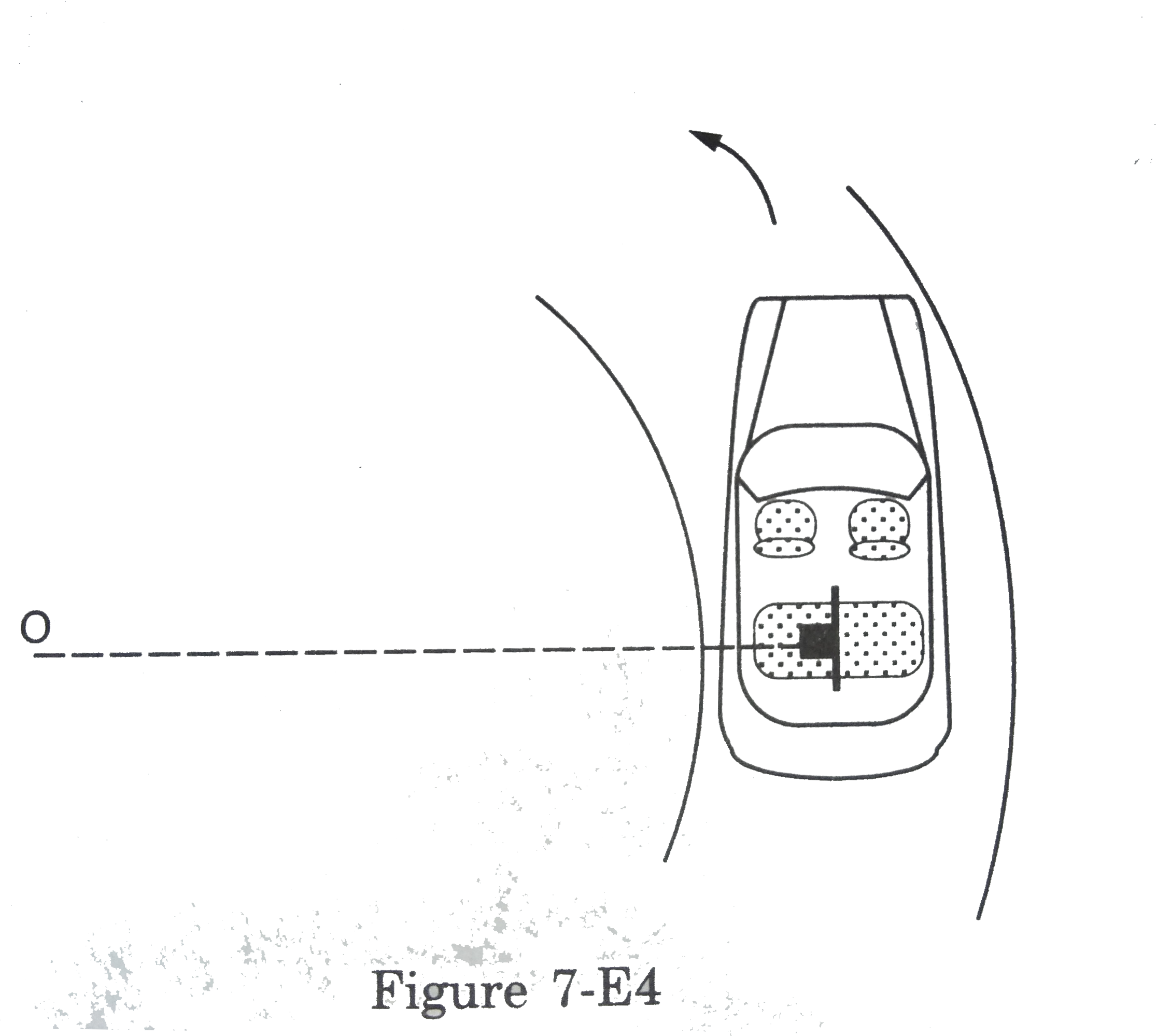A circular road of radius r is banked for a speed v=40 km/hr. A car of mass m attempts to go on the circular road. The firctioncoefficient between the tyre and the road is negligible.
the car cannot make a turn without skidding.
If the car turns at a speed less than 40 km/hr, it will slip down
If the car turns at the correct speed of 40 km/hr, the force by the road on the car is equal to
If the car turns at the correct speed of 40 km/hr, the force by the road on the car is greater than mg as well as greater than (mv^2)/r
The correct Answer is:B, D
Step by step video & image solution for A circular road of radius r is banked for a speed v=40 km/hr. A car of mass m attempts to go on the circular road. The firctioncoefficient between the tyre and the road is negligible. by Physics experts to help you in doubts & scoring excellent marks in Class 11 exams.
Updated on:21/07/2023Topper's Solved these Questions
- CIRCULAR MOTIONBook:HC VERMA ENGLISHChapter:CIRCULAR MOTIONExercise:Exercises
Explore 30 Videos
- CIRCULAR MOTIONBook:HC VERMA ENGLISHChapter:CIRCULAR MOTIONExercise:Question for short Answer
Explore 10 Videos
- CIRCULAR MOTIONBook:HC VERMA ENGLISHChapter:CIRCULAR MOTIONExercise:Objective -1
Explore 16 Videos
- CENTRE OF MASS, LINEAR MOMENTUM, COLLISIONBook:HC VERMA ENGLISHChapter:CENTRE OF MASS, LINEAR MOMENTUM, COLLISIONExercise:Objective -2
Explore 11 Videos
- FLUID MECHANICSBook:HC VERMA ENGLISHChapter:FLUID MECHANICSExercise:All Questions
Explore 90 Videos
Similar Questions
A car goes on a horizontal circular road of radius R. The speed of car is increasing at constant rate a m/s2. If the friction coefficient between the road and the tyre is μ, then the limiting speed of car is
View SolutionA car starts moving from rest on a horizontal circular road of radius of curvature R at . The speed of the car is increasing at a constant rate a. The coefficient of friction between the road and the tyres of the car is The car starts slipping at timet=t0 . Then t0 is equal to:
View Solution
Knowledge Check
If a cyclist moving with a speed of 4.9 m/s on a level can take a sharp circular turn of radius 4 m, then coefficient between the cycle tyres and road is
A0.41B0.51C0.61D0.71
What is the minimum stopping distance for a vehicle of mass m moving with speed v along a level road. If the coefficient of friction between the tyres and the road is μ.
View SolutionA car starts rest, on a horizontal circular road of radius R, the tangential acceleration of the car is a. The friction coefficient between the road and the tyre is μ Find the speed at which car will skid and also find the distance after travelling it skids.
View SolutionA car moving at a speed of 36 km/hr is taking a turn on a circular road of radius 50 m. A small wooden plate is kept on the seat with its plane perpendicular to the radius of the circular road figure. A small bock of mass 100 g is kept on the seat which rests against the plate. The friction coefficient between the block and the plate is μ=0.58. a. Find the normal contact force exerted by the plate on the block. b. The plate is slowly turned so that the angle between the normal to the plate and the radius of the road slowly increases Find the angle at which the block will just start sliding on the plate.

View SolutionA curved road is banked for speed v0. When a car moves along the road with a constant speed v, the force the friction between the road and the tyres is F. Which of the following statements(s) is (are) correct ?
View SolutionA car round on unbanked curve of radius 92 m without skidding at a speed of 26ms−1 . The smallest possible coefficient of static friction between the tyres and the road is
View SolutionA car is taking turn on a circular path of radius R. If the coefficient of friction between the tyres and road is μ, the maximum velocity for no slipping is
View SolutionA circular road of radius 50m has the angle of banking equal to 30∘ . At what should a vehicle go on this road so that the friction is not used?
View Solution